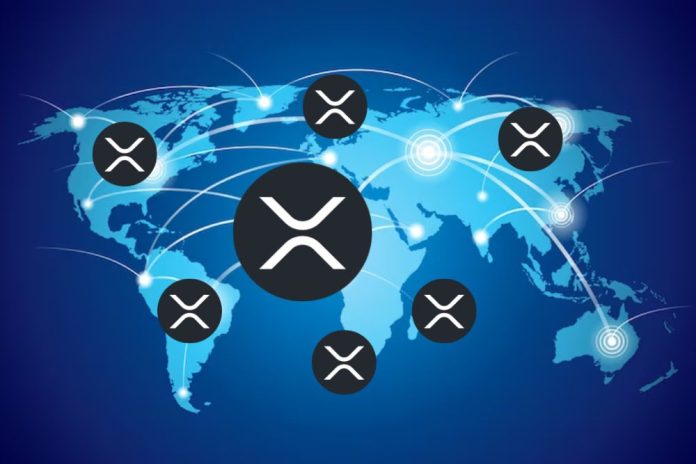A recent tweet by Vandell, the Co-founder of Black Swan Capitalist, has reignited discussion about the long-term intentions behind Ripple’s digital asset, XRP.
His tweet asks, “Was the plan all along for XRP to evolve from a payment currency into a global reserve digital currency and asset? It seems the agenda never changed, but the public narrative did.”
Attached to the tweet is an older video clip of Ripple CEO, Brad Garlinghouse, providing insights into the creation and role of XRP, specifically addressing its scalability and potential to serve as a global reserve currency.
This conversation has re-emerged at a time when the role of digital currencies in the global financial system is increasingly under scrutiny.
Was the plan all along for XRP to evolve from a payment currency into a global reserve digital currency and asset?
It seems the agenda never changed,
but the public narrative did. pic.twitter.com/mNJAjFcfzC— Vandell | Black Swan Capitalist (@vandell33) October 6, 2024
Ripple, which has positioned itself as a company focused on revolutionizing cross-border payments, uses XRP as a key component of its solutions, particularly through its XRapid service (now known as On-Demand Liquidity or ODL).
However, the possibility of XRP evolving into a global reserve currency seems to be at the center of renewed debates, spurred by Garlinghouse’s past comments and Vandell’s observation of a shift in the public narrative.
The Original Question: Is XRP Supply Sufficient for Global Scalability?
In the video clip shared by Vandell, Garlinghouse responds to a question regarding XRP’s role in Ripple’s XRapid service. The interviewer asks whether the current supply of 100 billion XRPs would be enough if the service were to scale globally or if there would be a shortage.
This question highlights concerns about the scalability and supply of the token in a world where its use could expand dramatically.
Garlinghouse in his response, mentions that XRP was created before Ripple, and the supply was intentionally capped at 100 billion units by its creators. He explains, “When XRP was created, this was created before Ripple existed.
The creators of XRP decided there would be 100 billion units. Because they saw it as rather than having a smaller number with a very high price, they saw it as something, they wanted to be effectively a global reserve currency.”
He emphasizes that no additional XRPs will be created, stating, “There never will be more than 100 billion XRP. All the XRPs that have ever been created have been created.”
We are on twitter, follow us to connect with us :- @TimesTabloid1
— TimesTabloid (@TimesTabloid1) July 15, 2023
XRP’s Role: A Payment Currency or Something More?
Vandell’s tweet implies that while Ripple has publicly focused on XRP as a tool for payments, especially cross-border payments through ODL, there may have been a broader agenda to position the token as a global reserve currency since.
This concept refers to a currency held in significant quantities by governments and institutions as part of their foreign exchange reserves. Such a status is typically associated with stability, widespread acceptance, and a reliable store of value.
Garlinghouse’s comments in the video suggest that the vision for XRP may have extended beyond its initial use case as a bridge currency for payments. By referencing the idea of the digital asset as a “global reserve currency,” he alludes to a more ambitious role for the asset—one that transcends simple transactional utility.
The mention of capping XRP at 100 billion units further indicates that the asset’s creators had a long-term vision for XRP’s scarcity and potential value in the global financial ecosystem.
The Shift in Public Narrative
Vandell’s tweet suggests that while the initial vision for XRP may have included aspirations for it to become a global reserve currency, the public narrative surrounding the asset has shifted over time. In its earlier years, Ripple and XRP were often discussed in the context of disrupting traditional banking systems, with a strong focus on payments.
However, as the digital asset market has evolved, Ripple has increasingly positioned XRP within the framework of cross-border liquidity solutions, especially targeting remittances and institutional payments.
This shift in narrative may be strategic, reflecting Ripple’s efforts to secure partnerships and gain regulatory clarity in various jurisdictions.
The debate around XRP’s true purpose—whether as a payment currency or a global reserve asset— would continue. What is clear, however, is that Ripple and XRP remain at the forefront of conversations about the future of digital currencies in the global financial landscape.
Disclaimer: This content is meant to inform and should not be considered financial advice. The views expressed in this article may include the author’s personal opinions and do not represent Times Tabloid’s opinion. Readers are urged to do in-depth research before making any investment decisions. Any action taken by the reader is strictly at their own risk. Times Tabloid is not responsible for any financial losses.
Follow us on Twitter, Facebook, Telegram, and Google News


